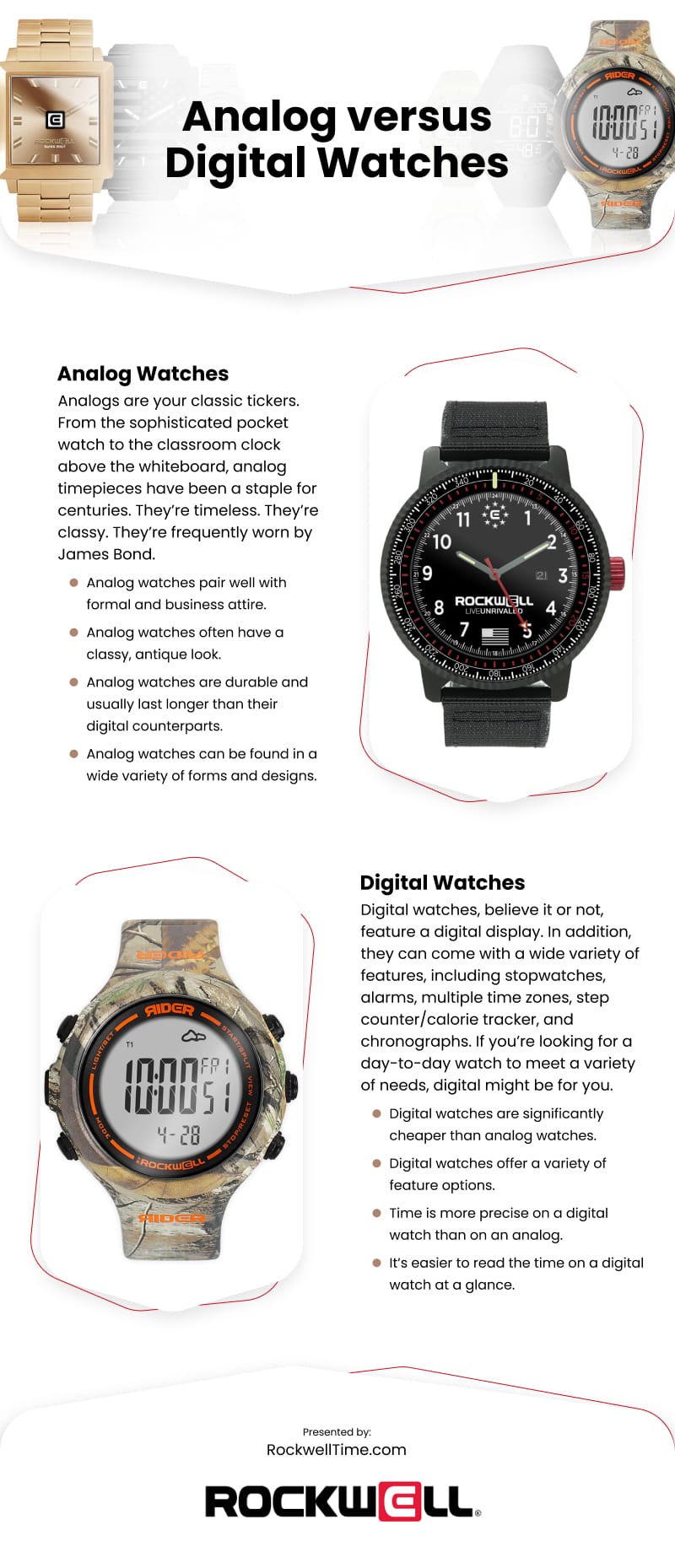
Analog or Digital – what sets them apart? We understand it’s not the question you’d pose in a watch haven, with experts and that one salesperson ready to delve into the intricacies of high-end timepieces. That’s why you’re turning to Google – a wise choice. We’ll skip the judgmental stares and provide you with the lowdown on analog and digital watches, detailing their pros and cons, and guiding you on selecting the perfect watch for your preferences.
Table of Contents
Analog: What is it?
Analog timepieces, timeless and classy, from pocket watches to classroom clocks, have been iconic for centuries, often donned by figures like James Bond. Mechanically, analog watches utilize a quartz piece or a spring mechanism beneath the face. Whether wound by the wearer or automatically through wrist movement, the spring releases energy, driving gears that propel the hands in a steady rotation. Due to their intricate mechanics, these watches are typically handcrafted.
Analog watches offer several advantages, particularly in the realm of fashion and style, as they complement formal and business attire seamlessly and exude a classy, antique aesthetic. Additionally, analog watches are known for their durability, often outlasting their digital counterparts, and are available in a diverse array of forms and designs, providing ample options for personal preference.
However, analog watches may lack precision, especially if not a high-accuracy model. Craftsmanship contributes to higher costs, and proficiency in reading traditional clocks, especially with Roman numerals, is essential. Additionally, analog watches often lack features found in digital counterparts, such as alarms and thermometers.
How to Find the Right Analog Watch
Opting for a Bond-esque look without breaking the bank? Evaluate your budget, spanning from a $20 department store analog to a $25,000 luxury automatic. Quality often corresponds with the price, so check for a robust warranty. Choose a style – tactical, sleek, or classic – and select a band material like leather, silicone, silver, gold, nylon, stainless steel, etc., to match your preference.
The Digital Difference
Digital watches boast a digital display and a range of features such as stopwatches, alarms, multiple time zones, step counter/calorie tracker, and chronographs. If you seek a versatile day-to-day watch, digital might be your ideal choice.
Digital watches present several advantages, particularly in terms of affordability, as they are considerably cheaper than analog watches. Additionally, digital watches provide a plethora of features, catering to diverse preferences and needs. Precision in timekeeping is a notable strength of digital watches, offering more accuracy than their analog counterparts.
However, may have a shorter lifespan, requiring regular battery changes and having a more casual appearance that limits suitability for formal occasions. Users need to consider the appropriateness for different events.
How to Find the Right Digital Watch
Start with your budget: department store digital watches are affordable but basic. Higher-end digital watches, though a few hundred dollars, are still cheaper than analog. Tailor features to your lifestyle – for athletics, pick a digital sports watch with a step counter. For frequent communication or travel, choose one with world time zones. If you need multiple alarms, select a watch accordingly. Choose the style and material – digital watches may seem casual, but options like stainless steel provide a classic, elegant look.
Comments
Download this infographic.
